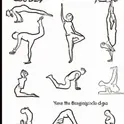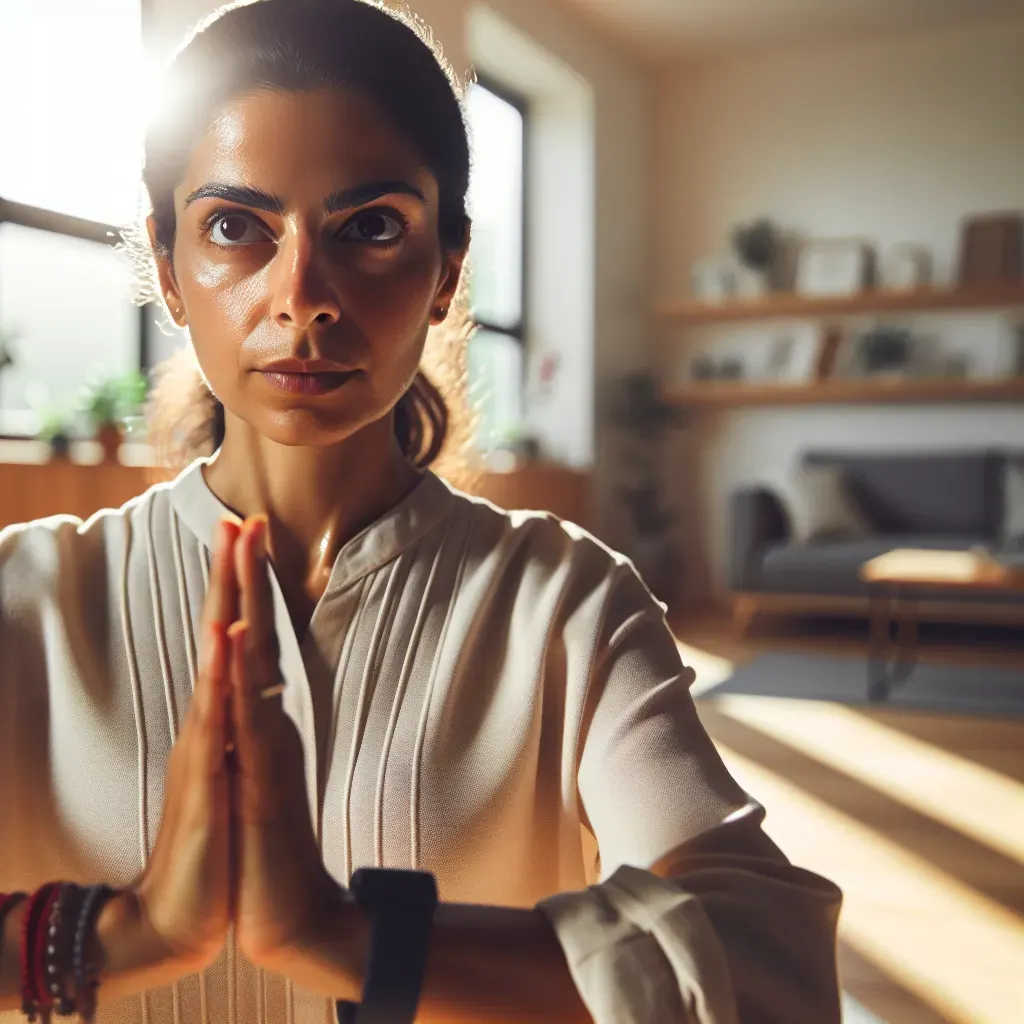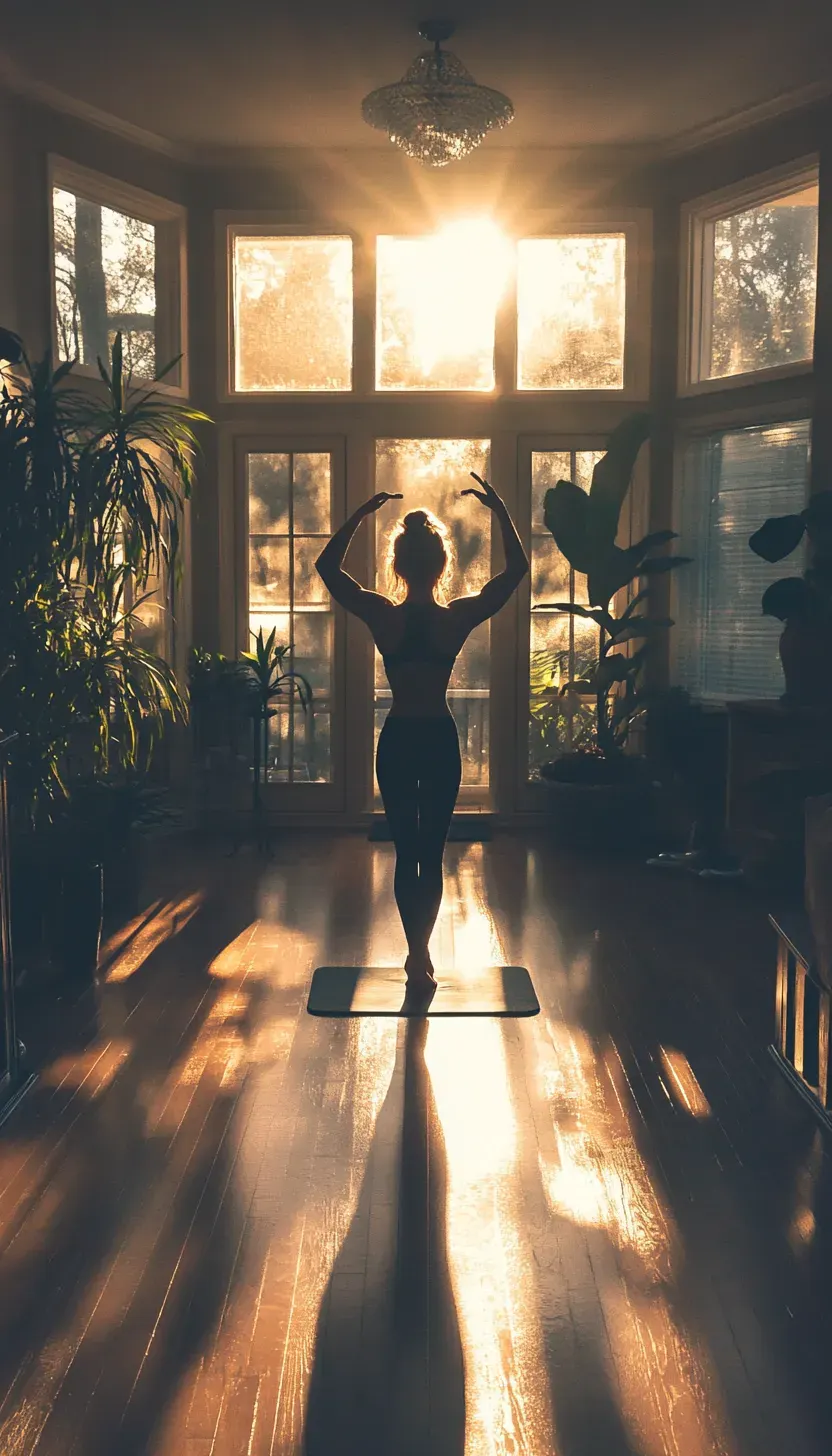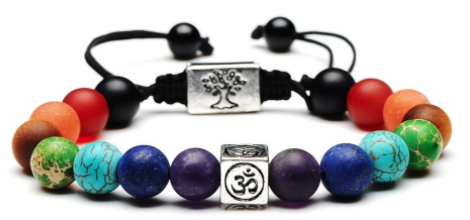Top 5 Basic Yoga Poses For Stress Relief And Relaxation: Redefining The Approach
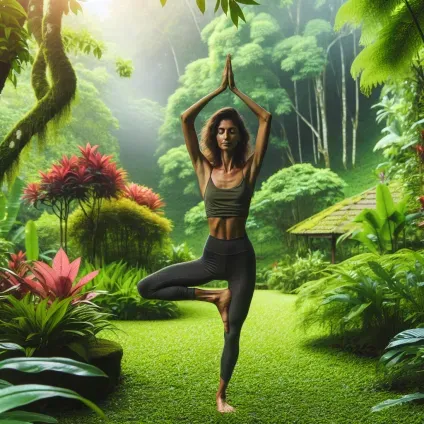
Table of Contents
1. Introduction: Finding Serenity in the Chaos
2. Redefining Yoga: A Down-to-Earth Approach
3. Pose 1: Mountain Pose (Tadasana)
Conventional Approach vs. Mindfulness and Breathwork
Addressing Concerns: Importance of Alignment and Posture
4. Pose 2: Child’s Pose (Balasana)
Conventional Approach vs. Integrating Breathwork and Mental Relaxation Techniques.
Addressing Concerns: Physical Limitations and Discomfort
5. Pose 3: Corpse Pose (Savasana)
Conventional Approach vs. Enhancing Relaxation through Guided Meditation and Visualization
Addressing Concerns: Restlessness and Inability to Relax
6. Pose 4: Cat-Cow Stretch (Marjaryasana-Bitilasana)
Conventional Approach vs. Adding Mindfulness to the Movement and Synchronizing with Breath
Addressing Concerns: Proper Alignment and Spinal Health
7. Pose 5: Legs Up The Wall Pose (Viparita Karani)
Conventional Approach vs. Utilizing Props and Modifications for Comfort and Effectiveness
Addressing Concerns: Accessibility and Practicality
8. Conclusion: Unlocking the Secret to Stress Relief and Relaxation
9. Embrace Your Zen Journey: Incorporating Yoga into Daily Life
10. Self-Care is Essential: Prioritizing Moments of Stillness and Relaxation
11. You Deserve this Moment: Honoring Yourself with Self-Care
12. Stay Connected: Exploring Further Resources and Support
13. Inhale, Exhale, Repeat: Harnessing the Power of Breath in Life's Journey
Feeling overwhelmed by the chaos of life? Like you're stuck in an endless cycle of responsibilities and deadlines with no escape? You're not alone. Imagine this: a day that feels like a never-ending rollercoaster ride, sprinkled with drama just to keep things interesting. All you want is to breathe. Well, friend, I've been there, done that, got the T-shirt.
You might be thinking, "Sure, yoga sounds nice, but who has time for complicated poses and fancy equipment?" I hear you. I've rolled my eyes at the thought of contorting into a pretzel too. But what if I told you there's a simpler, more down-to-earth approach to finding your zen?
Life is already hectic without adding more stress. So, buckle up, because I'm about to share the top 5 basic yoga poses that'll kick stress to the curb and leave you feeling like a chilled-out guru. Ready to say goodbye to stress and hello to serenity? Let's dive in.
Pose 1: Mountain Pose (Tadasana)
Conventional Approach and its Limitations:
Let's kick things off with the good ol' Mountain Pose, Tadasana. You've probably seen it before – standing tall like a mountain. The conventional approach says, "Just stand there and breathe." Sounds easy, right? But here's the kicker: it's often just treated as a physical posture, ignoring the mental aspect.
You might be thinking, "Um, how is standing like a statue gonna help me chill out?" And I feel you. Without tapping into the mind-body connection, it's like trying to swim with only one arm – you're not going anywhere fast.
Redefining the Pose with Mindfulness and Breathwork:
But hold up, let's flip the script on this bad boy. What if I told you that Tadasana is more than just standing? Picture this: you're rooted to the ground like an ancient oak tree, feeling every inch of your feet grounding into the earth. As you inhale, imagine you're growing taller, reaching for the sky.
And on the exhale, let all that tension melt away like butter on a hot pancake. By syncing your breath with your movements, you're not just striking a pose – you're cultivating a sense of calm from the inside out.
Addressing Counterarguments: Importance of Alignment and Posture
Now, I know what you're thinking – "But what about my posture?" Trust me, I've had my fair share of slouching moments. But here's the deal: Tadasana isn't just about standing up straight for the sake of it. It's about finding balance and alignment in both body and mind. So, chin up, shoulders back, and embrace the power of the mountain within you. You've got this.
Pose 2: Child’s Pose (Balasana)
Conventional Approach and its Limitations:
Next up on our stress-relief journey is the oh-so-cosy Child's Pose, Balasana. You've probably seen it – knees on the ground, forehead resting on the mat, arms stretched out like you're reaching for a hug.
The conventional wisdom says, "Just curl up and relax." And sure, it's comfy like a warm blanket on a chilly night. But here's the kicker: it often stops there, neglecting the deeper layers of relaxation that lie beneath the surface.
Integrating Breathwork and Mental Relaxation Techniques:
But fear not, my fellow stress-balls, 'cause we're about to take this pose to a whole new level. Close your eyes and take a deep breath in, feeling your belly expand like a balloon. As you exhale, imagine all your worries and tension melting away into the earth below.
With each breath, sink deeper into the pose, surrendering to the present moment like a leaf floating on a gentle breeze. By combining breathwork with mindful awareness, you're not just stretching your body – you're nourishing your soul.
Counterargument: Concerns about Physical Limitations and Discomfort
Now, I get it – you might be thinking, "But what if I can't touch my toes?" Hey, no judgment here. We all have our limitations, whether it's tight hips or creaky knees. But here's the beauty of Balasana: it's all about finding what feels good for you.
So, if your forehead barely grazes the mat or your hips are hovering in mid-air, that's cool. Just listen to your body and honour where you're at. After all, it's called Child's Pose for a reason – embrace that sense of innocence and playfulness as you reconnect with your inner child.
Pose 3: Corpse Pose (Savasana)
Conventional Approach and its Limitations:
Ah, Savasana – the grand finale of any yoga practice. You've made it through the twists and turns, and now it's time to reap the rewards of your hard work. The conventional approach? Lie back, close your eyes, and zone out. Sounds like a dream, right? But here's the catch: it's often seen as just a chance to nap, rather than a powerful tool for relaxation and rejuvenation.
Enhancing Relaxation through Guided Meditation and Visualization:
But fear not, my fellow Savasana sceptics, 'cause we're about to unlock the true potential of this magical pose. Close your eyes and imagine yourself lying on a sun-kissed beach, feeling the warmth of the sand beneath you and the gentle rhythm of the waves lulling you into a state of bliss.
With each inhale, feel yourself soaking up the energy of the sun, filling you with a sense of peace and vitality. And with each exhale, release any lingering tension or worry, letting it dissolve into the vast expanse of the ocean. By guiding your mind through this sensory journey, you're not just resting your body – you're rejuvenating your soul.
Counterargument: Potential for Restlessness and Inability to Relax
Now, I know what you're thinking – "But what if I can't switch off my brain?" Trust me, I've been there, tossing and turning like a restless sea. But here's the secret: Savasana isn't about not thinking – it's about observing your thoughts without getting swept away by them.
So, if your mind starts wandering off on a tangent, simply acknowledge it with a gentle nod and guide your focus back to your breath. Remember, there's no right or wrong way to do Savasana – as long as you're showing up and giving yourself the gift of stillness, you're doing it right.
Pose 4: Cat-Cow Stretch (Marjaryasana-Bitilasana)
Conventional Approach and its Limitations:
Alrighty, time to get down on all fours for some feline-inspired action with the Cat-Cow Stretch, Marjaryasana-Bitilasana. You've probably seen this dynamic duo in action – arching and rounding like a cat stretching after a catnap.
The conventional wisdom says, "Move with your breath and feel the stretch." Sounds simple enough, right? But here's the deal: it's often treated as just a warm-up exercise, missing out on the deeper benefits of spinal flexibility and emotional release.
Adding Mindfulness to the Movement and Synchronizing with Breath:
But hold your horses, my fellow stress kittens, 'cause we're about to take this stretch to new heights. As you inhale, arch your back like a Halloween cat, feeling the stretch ripple through your spine from tail to head. And as you exhale, round your spine like a scaredy-cat, drawing your belly button towards your spine and tucking your chin to your chest.
With each breath, move with intention and awareness, inviting a sense of fluidity and ease into your body. By syncing your breath with your movement, you're not just stretching your muscles – you're soothing your nervous system and tapping into your inner purr.
Addressing Concerns about Proper Alignment and Spinal Health:
Now, I know what you're thinking – "But what if I'm doing it wrong?" Trust me, I've had my fair share of wonky cat cows. But here's the scoop: it's not about achieving picture-perfect poses – it's about finding what feels good for you.
So, if your Cat looks more like a confused puppy or your Cow resembles a stiff board, that's cool. Just focus on moving with grace and ease, honouring the unique rhythm of your own body. After all, it's called a stretch for a reason – embrace that sense of playfulness and exploration as you unleash your inner beast.
Pose 5: Legs Up The Wall Pose (Viparita Karani)
Conventional Approach and its Limitations:
Last but not least, it's time to kick back and elevate those legs with the Legs Up the Wall Pose, Viparita Karani. You've probably seen this pose – lying on your back with your legs propped up against a wall like you're chilling in a hammock.
The conventional wisdom says, "Relax and let gravity do its thing." And sure, it's like a mini vacation for your legs. But here's the catch: it's often treated as just a physical stretch, overlooking the deeper benefits of relaxation and stress relief.
Utilizing Props and Modifications for Comfort and Effectiveness:
But fear not, my fellow wallflowers, 'cause we're about to turn this pose upside down – literally. Grab a blanket or bolster and slide it under your hips for extra support, ensuring maximum comfort and relaxation.
As you settle into the pose, close your eyes and focus on your breath, feeling your belly rise and fall like the gentle swell of the ocean. With each inhale, imagine a wave of calm washing over you, melting away any tension or tightness.
And with each exhale, surrender to the present moment, letting go of any worries or distractions. By creating a cosy cocoon of relaxation, you're not just resting your legs – you're rejuvenating your mind and body from the inside out.
Doubts about Accessibility and Practicality:
Now, I get it – you might be thinking, "But what if I don't have a wall to lean on?" Hey, no worries. Whether you're chilling on your couch or lying in bed, you can still reap the benefits of this pose. Simply prop your legs up on a stack of pillows or cushions and let gravity do the rest.
And if you're worried about looking like a goofball, remember this: self-care isn't about looking Instagram-worthy – it's about feeling damn good in your skin. So, kick off those shoes, kick up those legs, and let's get ready to unwind like never before.
Conclusion:
Congratulations! You've just unlocked the secret to stress relief and relaxation through yoga's transformative power. These five basic poses aren't just about stretching your body—they're about nourishing your soul, calming your mind, and reconnecting with your inner peace.
Embrace Your Zen Journey:
Now that you've learned these foundational poses, it's time to incorporate them into your daily routine. Whether you're a seasoned yogi or a newbie, these poses are accessible to everyone and can be practised anytime, anywhere. So, roll out your mat, find a quiet space, and let the magic of yoga guide you to a place of tranquillity and serenity.
Self-Care is Essential:
Remember, self-care isn't selfish—it's essential. In the hustle and bustle of everyday life, it's easy to neglect our well-being. But by prioritizing moments of stillness and relaxation, you're not only benefiting yourself but also those around you. So, take a deep breath, give yourself permission to unwind, and let go of the stress that no longer serves you.
You Deserve this Moment:
As you journey through life's ups and downs, remember that you deserve moments of peace and tranquillity. Whether it's a few minutes of deep breathing in Mountain Pose or a restorative Savasana session, honour yourself by carving out time for self-care. You're worth it.
Stay Connected:
If you've found these poses helpful, consider exploring more advanced variations or diving deeper into the world of yoga. There are countless resources available—from online classes to local studios—that can support you on your journey to holistic wellness.
Inhale, Exhale, Repeat:
As you navigate life's twists and turns, always remember the power of your breath. Inhale courage, exhale doubt. Inhale strength, exhale fear. With each breath, you're creating space for peace, joy, and love to flow freely within you.
People Also Asked
1. What are the top five basic yoga poses for stress relief and relaxation?
The top five basic yoga poses for stress relief and relaxation are Mountain Pose (Tadasana), Child’s Pose (Balasana), Corpse Pose (Savasana), Cat-Cow Stretch (Marjaryasana-Bitilasana), and Legs Up The Wall Pose (Viparita Karani).
2. Do I need any prior yoga experience to practice these poses?
No prior yoga experience is necessary. These poses are beginner-friendly and suitable for practitioners of all levels.
3. How often should I practice these yoga poses for optimal stress relief?
You can practice these yoga poses as often as you like, depending on your schedule and personal preferences. Aim for consistency and listen to your body's needs.
4. Can I practice these poses if I have physical limitations or injuries?
Yes, modifications and props can be used to accommodate physical limitations or injuries. Always listen to your body and work within your comfort level.
5. How long should I hold each yoga pose?
Hold each yoga pose for at least 5-10 breaths, or longer if desired. Focus on deep, mindful breathing to enhance relaxation and stress relief.
6. Can I combine these poses into a sequence for a longer practice session?
Yes, you can combine these poses into a sequence for a longer practice session. Start with gentle warm-up poses, flow through the sequence, and end with a final relaxation pose.
7. What time of day is best to practice these yoga poses?
You can practice these yoga poses at any time of day that works best for you. Many people find morning or evening practices particularly beneficial for stress relief and relaxation.
8. Do I need any special equipment to practice these yoga poses?
No special equipment is required. A yoga mat and comfortable clothing are all you need. Optional props such as blankets or bolsters may enhance comfort and support.
9. Can these poses be practised indoors or outdoors?
These poses can be practised indoors or outdoors, depending on your preference and environment. Choose a quiet, peaceful space where you feel comfortable and focused.
10. How soon can I expect to feel the benefits of practising these yoga poses?
You may start to feel the benefits of practising these yoga poses immediately, such as increased relaxation, reduced stress, and improved mental clarity. Consistent practice over time can lead to even greater benefits.
Recommended Products
1. Yoga Mats: Promote high-quality yoga mats that provide cushioning and support for practising the featured yoga poses comfortably.
2. Meditation Cushions: Recommend meditation cushions or bolsters to enhance comfort and relaxation during seated poses like Child's Pose and Corpse Pose.
3. Essential Oils: Highlight aromatherapy essential oils known for their calming and stress-relieving properties, such as lavender or chamomile, to complement the yoga practice.
4. Guided Meditation Apps: Promote subscription-based guided meditation apps that offer mindfulness exercises and relaxation techniques to complement the yoga practice and promote overall well-being.
5. Yoga Apparel: Feature breathable and comfortable yoga apparel, such as leggings and tops, designed to allow for ease of movement during yoga practice, enhancing the overall experience of stress relief and relaxation.
